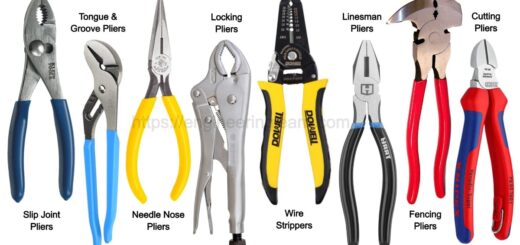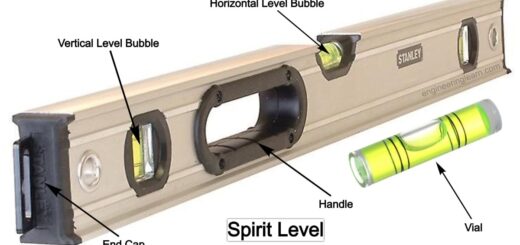Angular Measuring Tools and Their Uses [Complete Guide]
![Angular Measuring Tools and Their Uses [Complete Guide]](https://engineeringlearn.com/wp-content/uploads/2023/04/Angular-Measuring-Tool-1024x539.jpg)
Introduction
Angular Measuring Tools and Their Uses [Complete Guide]: – The angular measuring tool is your protection against loose joinery and exclamation-filled outbursts, whether you’re accomplishing something significant like building a nursery shed, or just tackling around-the-house support and maintenance tasks like measuring for a storm window. Measurement is the activity of acquiring and comparing amounts of specific things in areas like material science, quality assurance, and engineering and designing. The mechanism by which these numerical or mathematical relations are acquired is measuring tools or devices with perfect techniques that depict their use. ( Types of Measuring Instruments )
What is the Angular Measuring Tool?
Measuring tools are necessary equipment for deciding physical quantities. Angles are measured in degrees using protectors. The measurement of angles of tapers or other surfaces that is like tapers are the tools which comprises of angular measurement. In the field of angular measurement, there are two different types of angular measurement instruments that are usually utilized to measure angles.
For angular measurement, there are different tools that are accessible in view of the type of part to be measured and the precision to be required during measurement. The tools that is utilized most usually is known as the sine bar. It’s essential to utilize the right tool and measure with the most precise or exact units for each thing measured if you want to measure precisely and quickly.
Types of Angle Measuring Tools
Below is the list of Angle measuring tools that are used for different purposes: –
1. Pivot Square: ( Angular Measuring Tools )
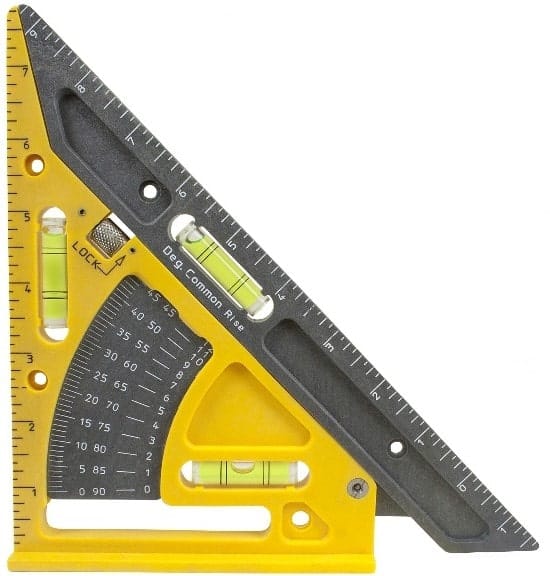
The aluminum pivot Square has a locking, adjustable, or movable leg that immovably holds any angle from 0 to 90 degrees, so you can make repeated, first, you can use a circular saw through marks and further guide your circular saw through angled crosscuts. Spirit vials assist you with checking for level, while the angle is laid out to cut siding where it meets a roofline.
2. Three-Sided Squares: ( Angular Measuring Tools )
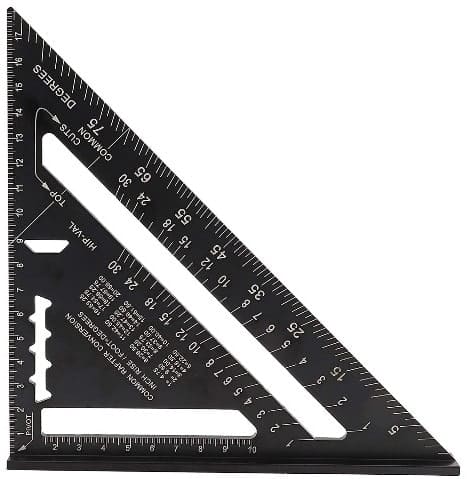
The Speed Square is a carpenter’s work of art because of its durability, ease to use, and full of rooftop layout information. To find angles, mark cutlines, and as a crosscut guide to keeping your saw straight you can utilize three-sided square. You can stick with the aluminum alloy form or version, not plastic: It’s more rough, and the stamped numbers are simpler to read.
3. Square Shooter: ( Angular Measuring Tools )
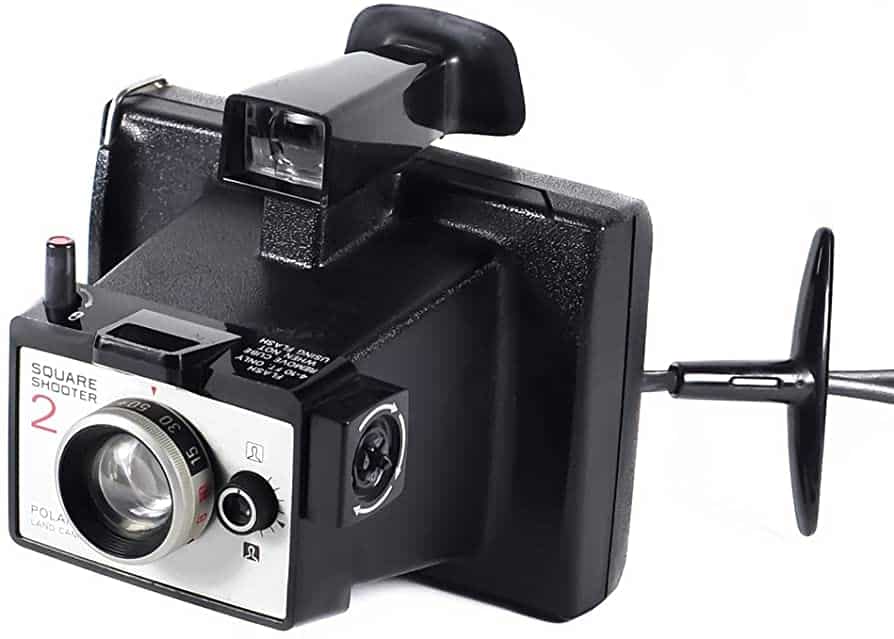
This layout or design weapon for wide pieces of timber has a sliding knob or handle along its semi-circular arc. After pressing the triangle and afterward a fixed knob on the handle against the edge of the work, you need to lock the triangle at the desired degree. The 12-inch blade can’t wobble or pivot as it directs your pencil or your saw.
4. Plumb Bob: ( Angular Measuring Tools )
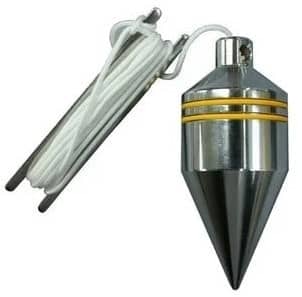
Plumb bob indicates the direction of the gravitational force. The weight generally falls down to the earth. You can utilize or involve the string as the Zero-degree reference point of gravitation. Individuals likewise can utilize the plumb bob with a speed square to decide a slope of a surface.
5. T-Bevel: ( Angular Measuring Tools )
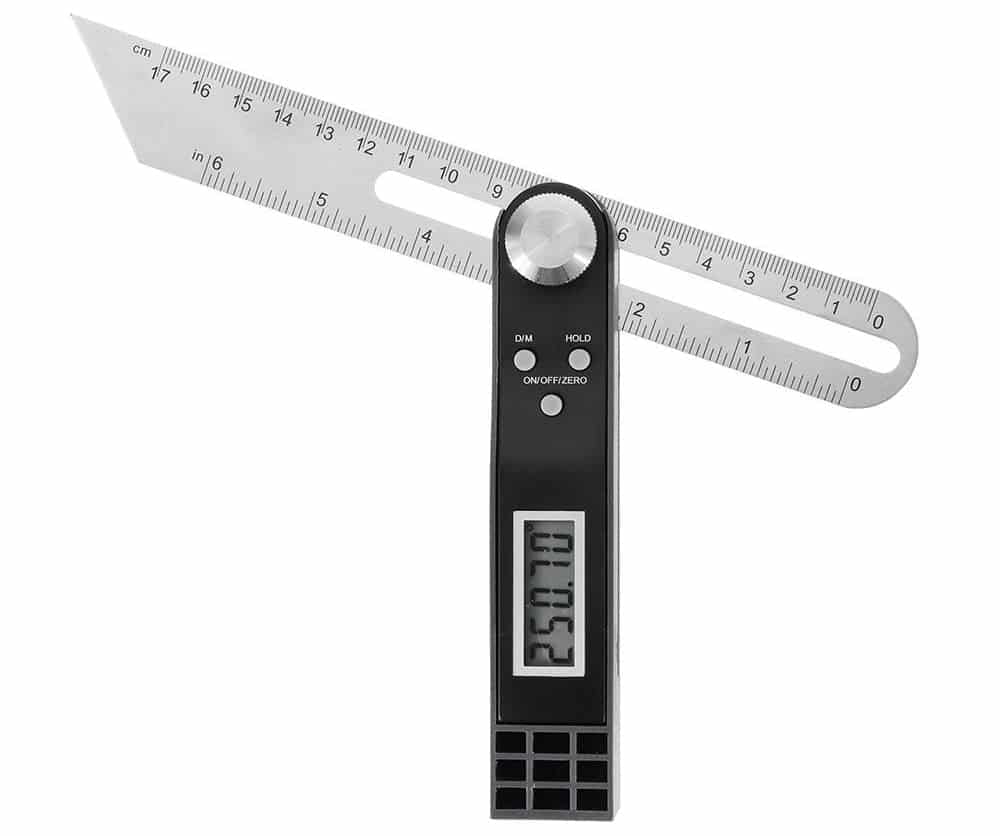
You need to lock the T-bevel’s sliding blade against any angle, afterward utilize the tool to copy that angle onto your work or to set the angle of a saw blade. This T-bevel’s blade locks secure with a recessed bronze latch or hook so that either side can lie flush as you’re marking your design or layout.
6. T-Bevel Setter: ( Angular Measuring Tools )
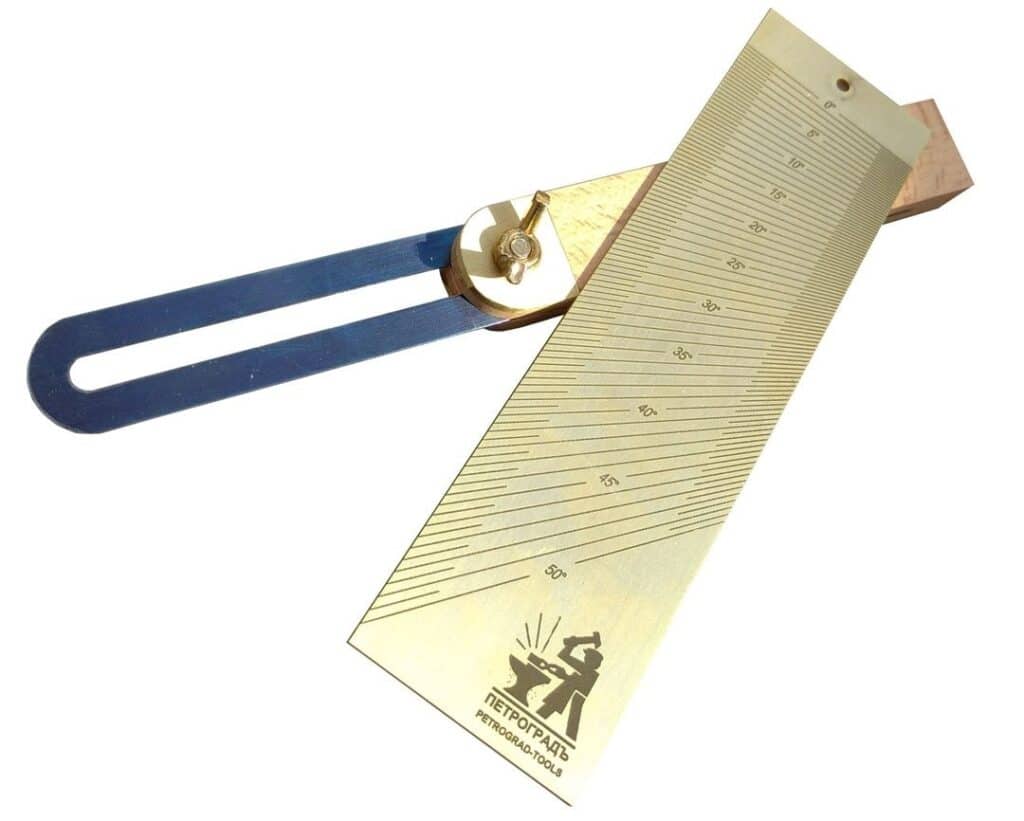
T-bevels, with no markings, are ideal for matching and transferring angles, what are those angles can’t be exactly determined. To find out, align or adjust the bar with the T-bevel’s blade and read the angle to half a degree. Or on the other hand, set an ideal angle and adjust the bevel blade with it.
7. Bevel Gauge: ( Angular Measuring Tools )
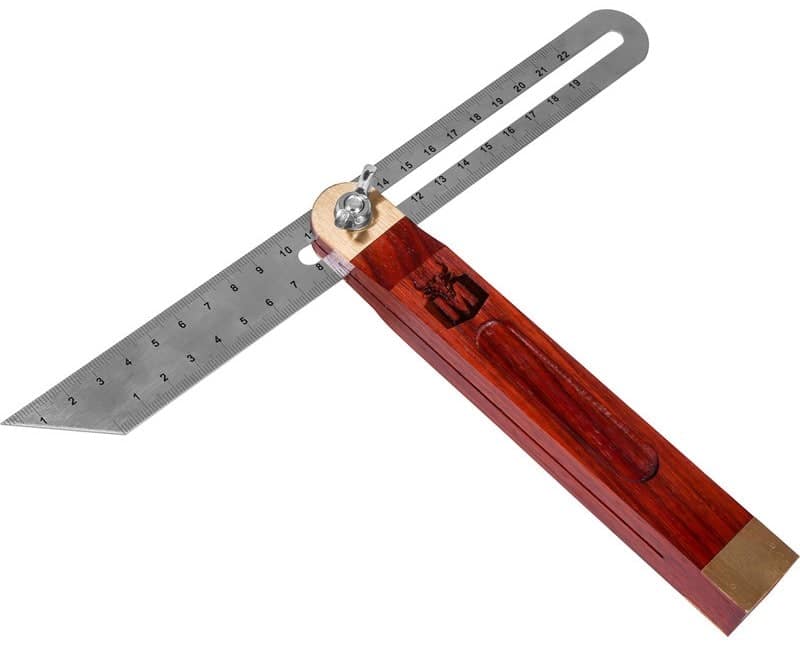
As the name says, a bevel gauge doesn’t measure, however, it measures. The angle of a bevel gauge can be set as per your necessity. You can copy an angle block set and further gauge any object’s edge only if you have an angle block set. For instance, pick the 10-degree angle block and use it to check any edge regardless of whether it’s 10 degree or not.
8. Protractor: ( Angular Measuring Tools )
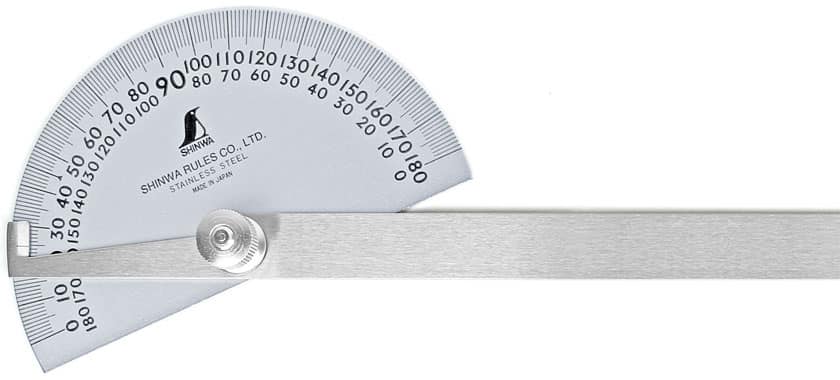
The protractor permits you to measure an angle that is generated by different sides of an object. What’s more, subsequently, you could do the measure at any position you need as long as you get the angle. Digital or non-digital are types of angle measuring tools. The digital allows you quickly measure yet requires battery power. You don’t require battery power with regards to a mechanical protractor however you were unable to get the reading quickly. Ensure your vision is great while utilizing the mechanical one.
9. Bevel Protractor: ( Angular Measuring Tools )
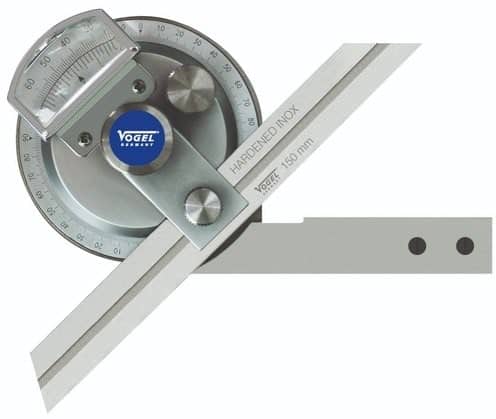
A Bevel solid metal protractor head with chrome plated steel rule has been available in the market for a long period, Bevel protractor is an exemplary mechanic’s tool for any individual who values exact layout marks. The rotating 180-degree head locks the rule at a desired angle or lets you know the exact angle of an existing level.
10. Vernier Bevel Protector: ( Angular Measuring Tools )
The bevel protectors are essential and broadly utilized as the angular measuring device. Vernier bevel protector which has a vernier scale like a vernier caliper with an acute angle for measurement is one of the simplest angular measuring devices.
11. Combination Square Set: ( Angular Measuring Tools )
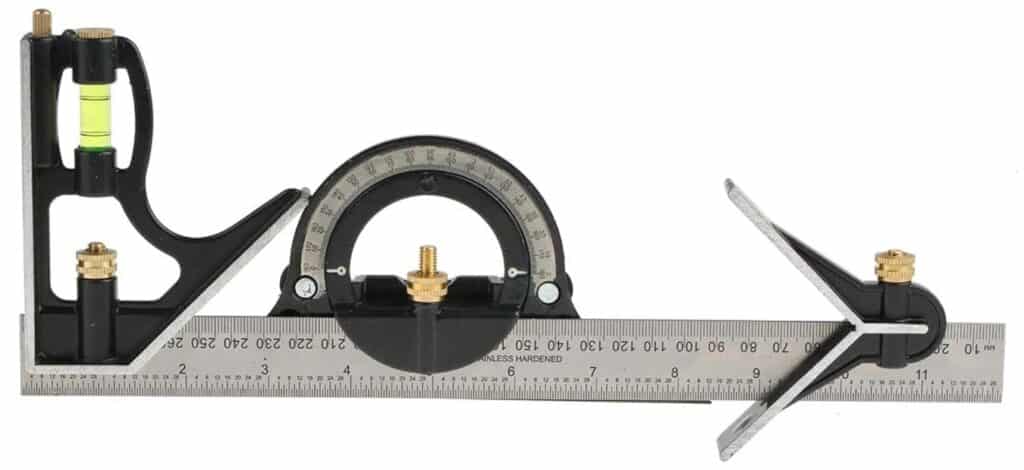
It is a tool utilized for various purposes in carpentry and metalworking. A blade, a moving head called a square head, a protractor, and a center head are things available in the combination square set. The most well-known heads are standard or squares head utilized for laying or checking right angles and 45° angles.
12. Multiple Angle Measuring Rule: ( Angular Measuring Tools )
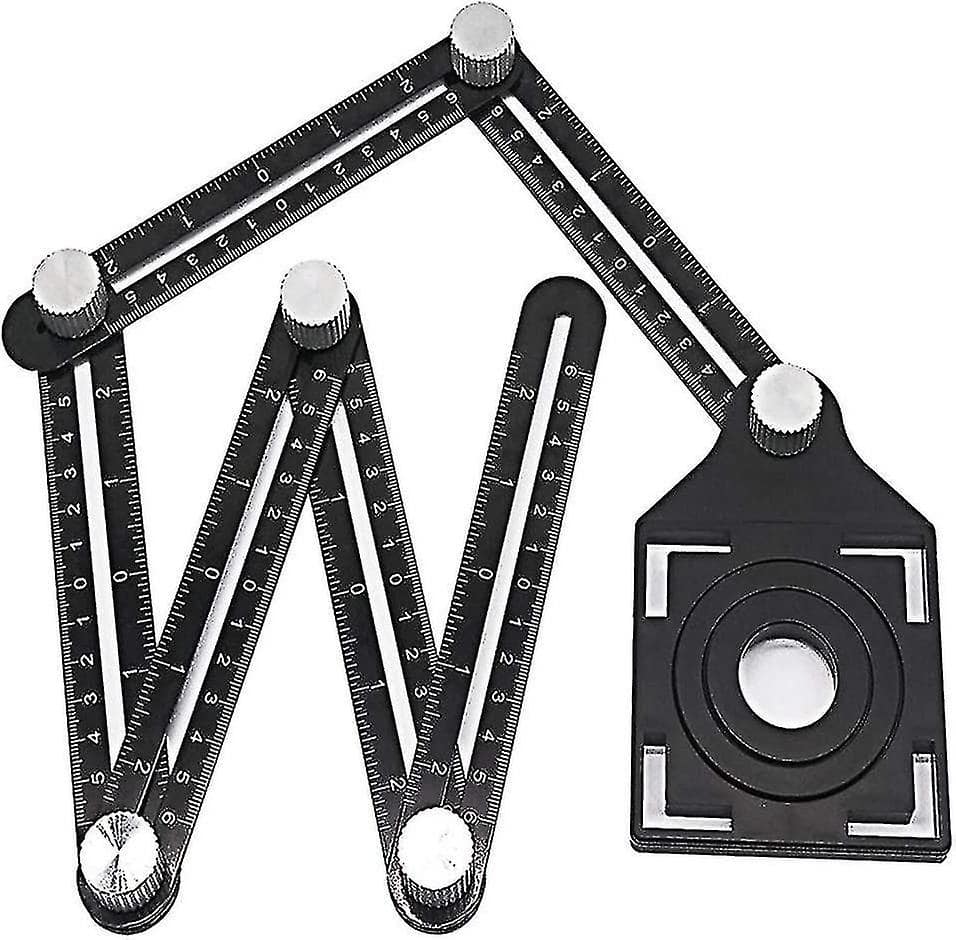
Like a bevel gauge, however, this tool can’t precisely measure the angle, notwithstanding, working on your job as per angle measurement is extremely useful. Rather than measuring each angle and estimating the length of the sides individually, a multi-angle measuring ruler functions to effectively copy the numerous angles of an object. Additionally, it copies the dimensions also so you don’t have to measure the side length again and again.
13. Clinometer: ( Angular Measuring Tools )
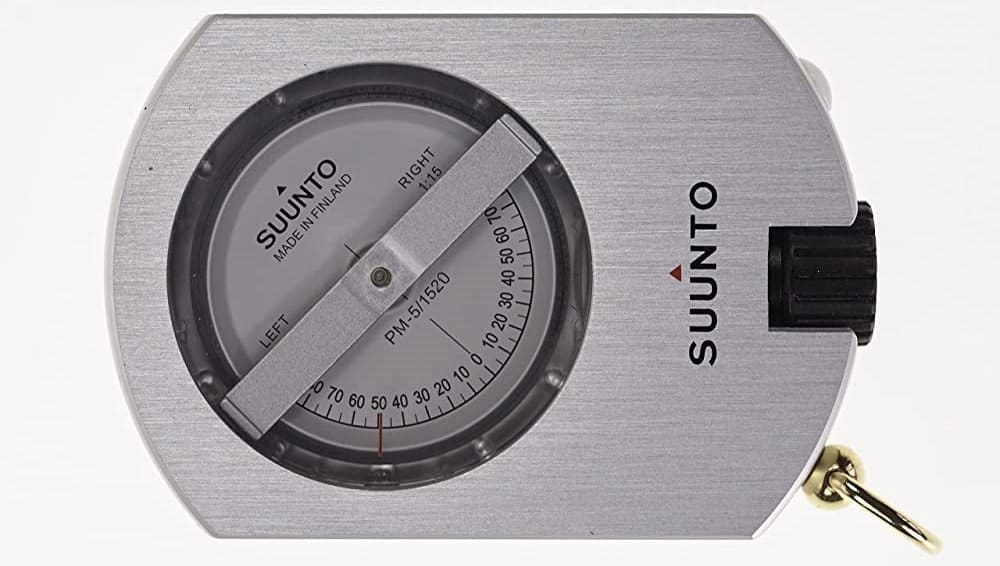
A clinometer is a unique sort of angular measuring device for the application of spirit level. The spirit level is mounted on a rotary part carried on the housing. One face of the housing forms the foundation of the instrument and a circular scale is mounted on it. To decide the included angle of two adjacent faces of a work piece clinometer is utilized.
The instrument base is put on one of the surfaces and the rotating part is adjusted till a zero reading of the bubble is acquired. A subsequent reading is taken by keeping the instrument on the other surface. The included angle between the faces is the difference among the two readings because of the included angle between the faces.
14. Sine Bar: ( Angular Measuring Tools )
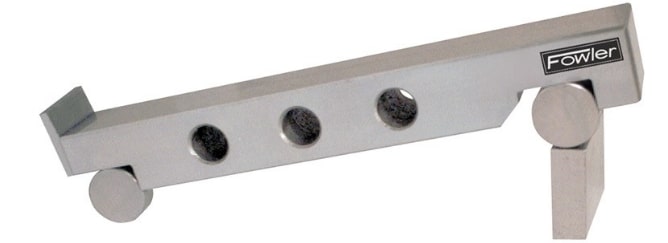
The sine bar is a simple tool for angular measurement to use a high degree of accuracy. It is utilized with slip gauges for accurate angle measurements. It comprises a steel bar and two rollers which are comprised of high-carbon steel with high chromium corrosion resistance. The rollers are exact as well as accurate and in equivalent distances across and attached to the bar and additionally to the upper surface of the bar. The nominal or ostensible distance between axes is 100mm, 200mm, or 300mm which is determined by the distance between two rollers. At the point when the rollers interact with a flat surface, the highest point of the bar is parallel to the surface.
15. Miter Guide: ( Angular Measuring Tools )
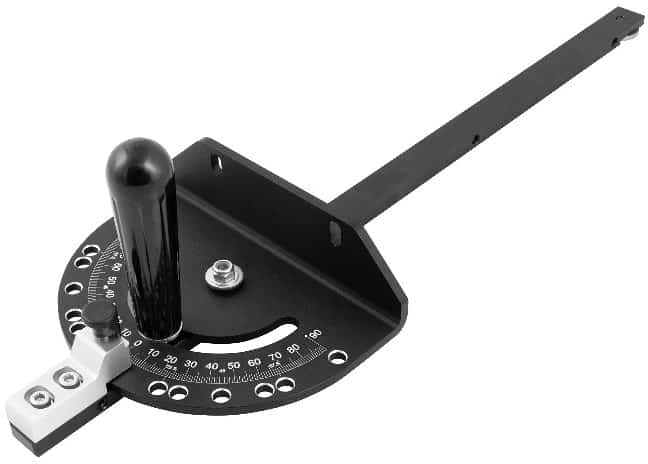
Press these basic tool legs to flush against any inside or outside corner. Inside the gears position, a protruding metal tab bisects the angle. Presently you can take the guide for your miter saw, support one leg against the wall, then line up the saw blade against the tab. You’ve recently set the specific miter angle.
16. Digital Protractor: ( Angular Measuring Tools )
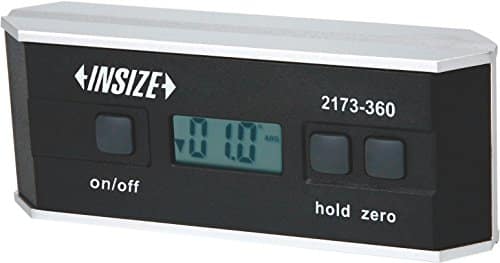
Digital protractor is seemingly the most accurate tool you tested, and positively the most bonehead confirmation. You can press each of its legs into a corner and get a digital readout to a 10th of a degree. The tool accompanies two vials so you should rest assured its level on the two sides of the corner as you take a reading.
17. Angle Gauge or Angle Cube: ( Angular Measuring Tools )

An angle gauge or angle cube allows you to measure the surface angle effectively against the horizontal axis wherein utilizing the protractor can be difficult to do. Essentially put the angle gauge on a surface you want to measure its angle, and afterward, it will display the reading. Handymen who want to install a pipe can undoubtedly apply this tool to measure the slope of the pipe. In the event that the angle cube is magnetic, the work can be more convenient to do in light of the fact that it will stick to the pipe. Moreover, carpenters likewise use it to measure the tilt or slant of a table saw blade.
18. Adjustable T-Square: ( Angular Measuring Tools )
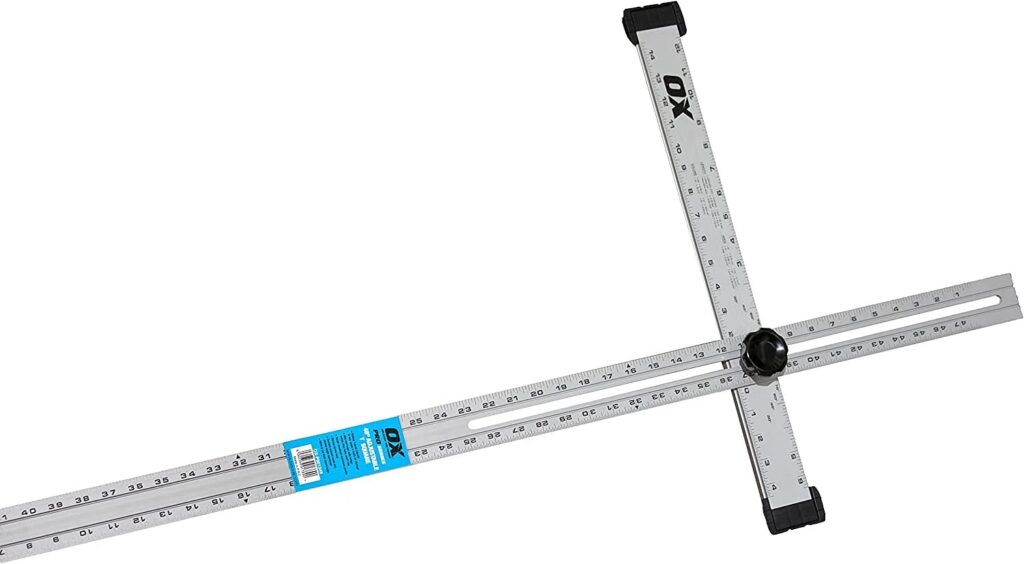
Adjustable T-square helps in improving and enhancing the old 4-foot squares that could check 90-degree cuts in drywall, OSB, and other sheet goods. Thirty, forty-five, and ninety degrees markings are present in adjustable or Movable Square. Or then again you can set it to any angle somewhere in the range of 0 and 180 degrees. Folds for easy transport.
19. Spirit Level: ( Angular Measuring Tools )
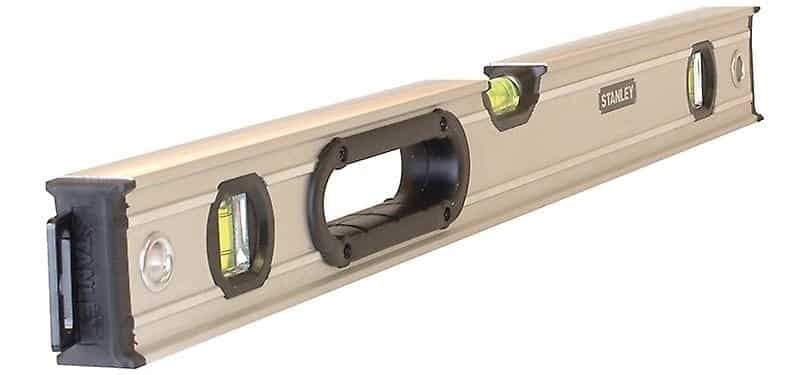
A flat object is viewed as a level at whatever point the surface is perpendicular to the gravitation. At the point when an inclinometer shows a reading of 90 degrees, it implies level. Spirit level, bubble level, is designed to show regardless of whether the surface is horizontal. The spirit level had very few curved or bended glass vials with a consistent internal diameter at each viewing point. These vials are not entirely filled with liquid ethanol since alcohol has a low viscosity and surface tension that permits bubbles to rapidly go down the tube. A colorant like fluorescein, normally yellow or green, is added to increment visibility.
20. Taper Measurement: ( Angular Measuring Tools )
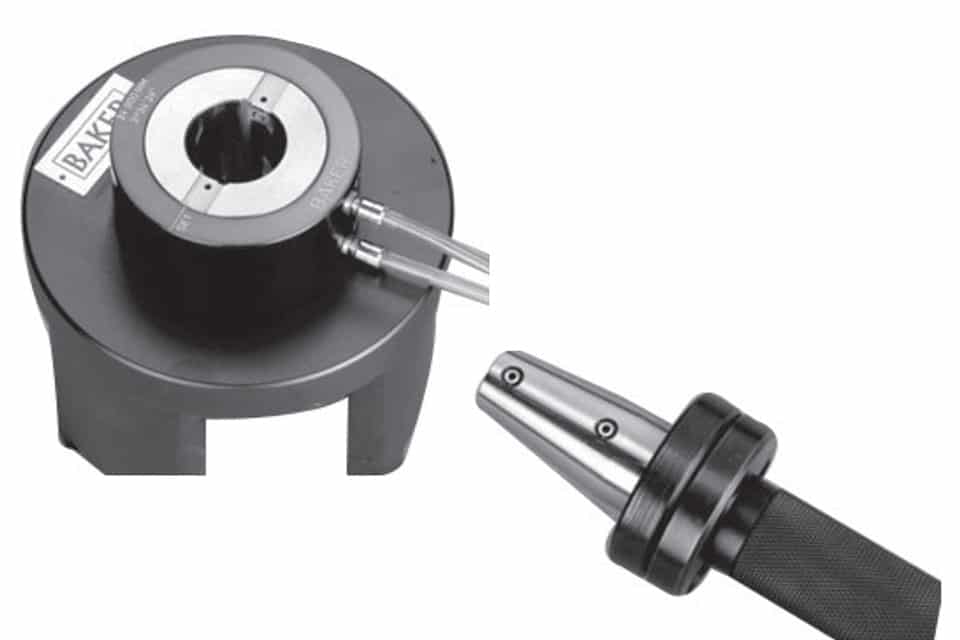
The Taper angle is measured or estimated by a bevel protractor, tool room microscope, autocollimator, sine bar, rollers, slip gauge, and micrometer. Large tapers can be obtained in a straightforward way from micrometer readings. This makes it conceivable to test both inward and outer taper up to ten times quicker than more traditional methods and doesn’t need a sine bar or more intricate equipment.
21. Angle Setter for Sharpening System: ( Angular Measuring Tools )
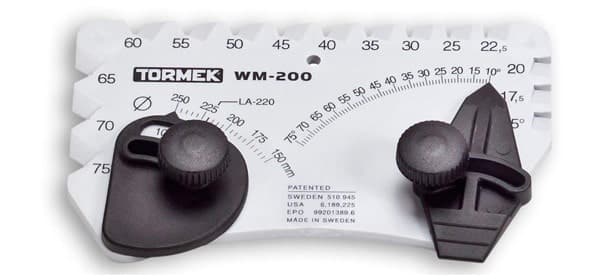
In the event that you will sharpen your knife utilizing a sharpening machine, setting the angle of your chisel on the circular sharpener can be a conspicuous test. Putting the chisel or knife at the right angle can decide how good the sharpening is. By utilizing this angle setter, your work is simpler as you can set your preferred angle.
Conclusion
Both digital and non-digital, there are a few tools to measure the angles that you need to be aware of. This can be critical to improving your idea and ability to take care of various issues during work since each of them is utilized for various purposes. Assuming you need to measure the surface’s angle precisely, the angle gauge is appropriate for that job. While a protractor is utilized when you need to measure an angle generated by different sides that intersect. You could utilize a try square to ensure regardless of whether a certain angle is 90 degrees. Then again, utilizing a multi-angle measuring ruler allows you to copy a few angles of a solitary object effectively, and permits you to work faster.
Content Source: – thisoldhouse

